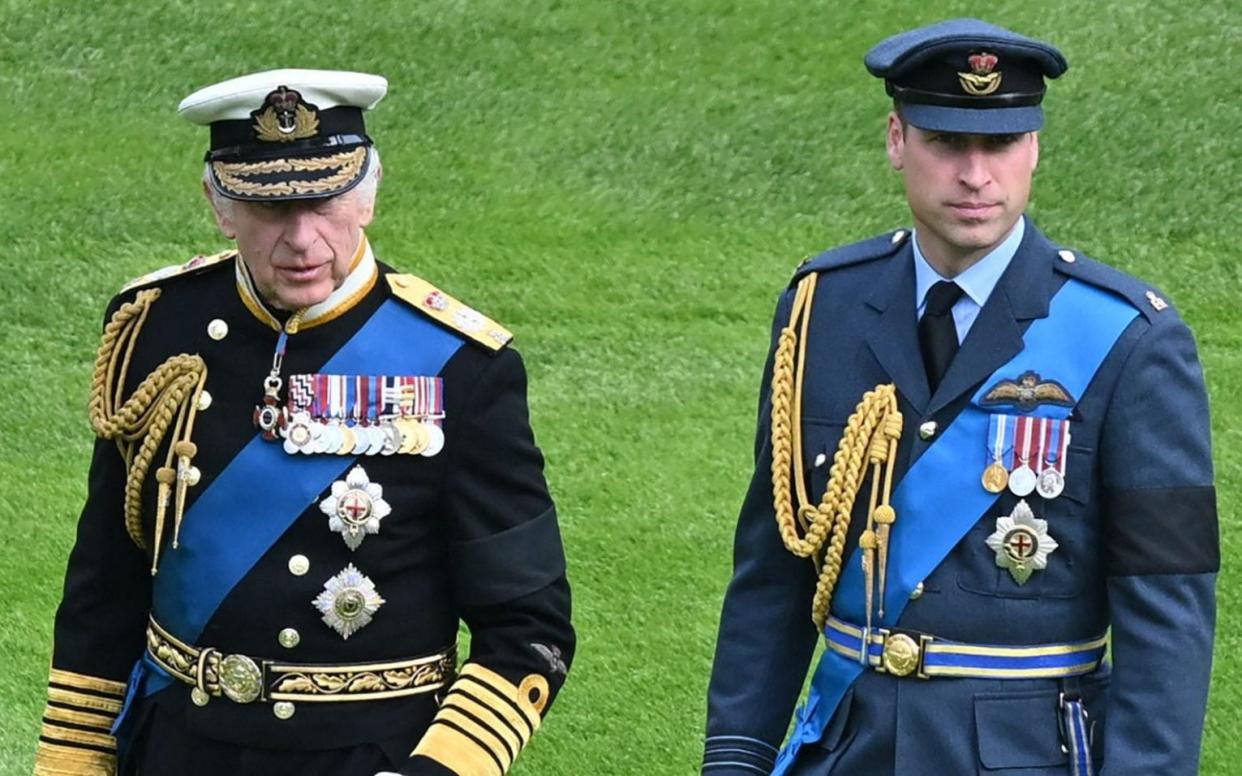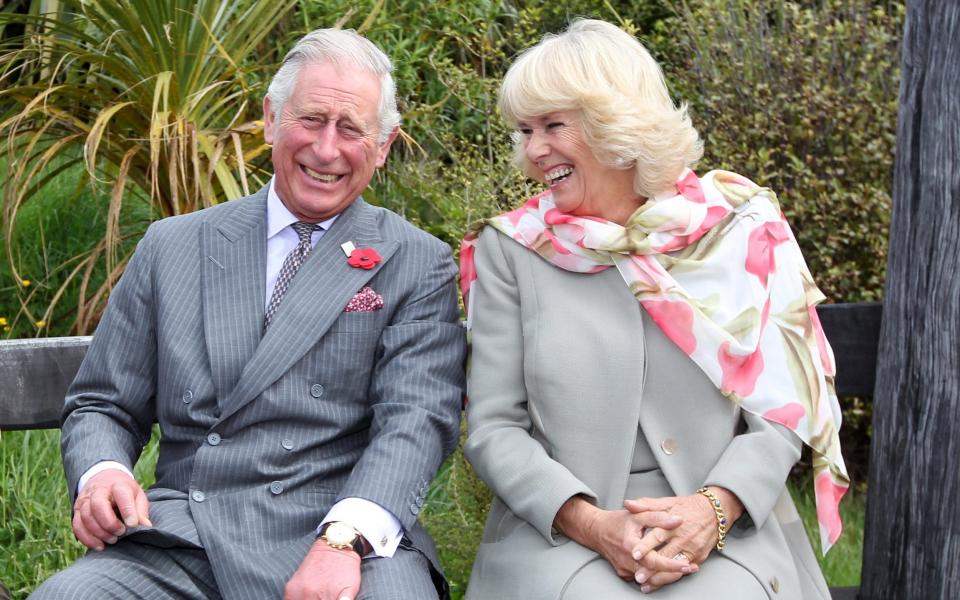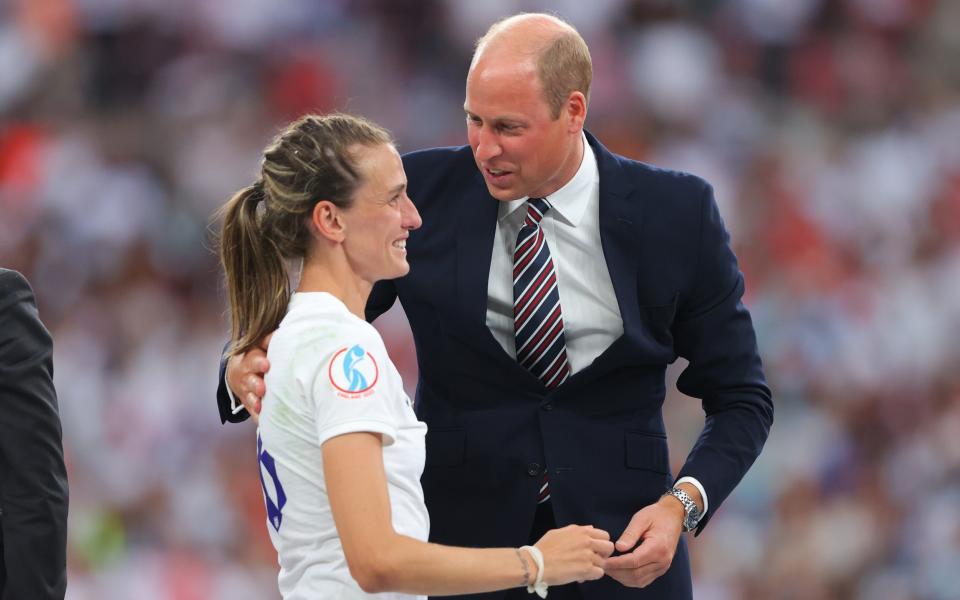The battle to modernise the monarchy – and what's holding them back

Before a certain intervention by Baroness Hussey, Buckingham Palace was hoping the Queen Consort’s first major speech in her new role would show the nation how very modern the monarchy is becoming.
Campaigning against rape and domestic abuse is a long way from tree-planting and ribbon-cutting, and Queen Camilla’s informal style is in marked contrast to the stiff-necked line-ups of old.
It should have been a triumph. Instead, it serves as a case study in why the King and Queen’s aim of dragging the institution into the 21st century is going to be a slow and choppy process.
Anyone with even the most cursory interest in the Royal family will be aware by now that the King has long been itching to “slim down” the monarchy and to make it more relevant to the times in which we live.
Egged on by Prince William, who has even more reformist zeal than his father, the King wants to make the Royal family physically and ideologically more accessible to the public.

Standing in his way are 70 years of tradition and corporate memory that he inherited from his late mother, as well as vested interests that range from his own relatives to charity bosses.
“What we’re seeing at the moment is a clash of cultures,” says one royal source. “Clarence House was quite a modern organisation, but the King is having to assimilate that into an existing structure at Buckingham Palace, which is rooted in the 1950s.
“The people who worked for the King at Clarence House and who know his way of doing things are coming up against a little bit of ‘Well, that’s not how we do things here’ at the palace.”
It was an attempt to blend old and new that led, ultimately, to Lady Susan Hussey’s resignation as a Lady of the Household after her now infamous conversation with charity worker Ngozi Fulani.
Had the King simply cleared out all of his late mother’s ladies-in-waiting, Lady Hussey would not have been at the event last Tuesday night, but partly out of a sense of loyalty to a woman who is his eldest son’s godmother, he kept the 83-year-old at the Palace with a new title.
One former palace aide cites it as a classic example of the difference between members of the Royal family and those who work behind the scenes.
“The King, the Queen Consort and others spend almost every day meeting people, and are bang up to date with people’s concerns and changing attitudes,” the source said. “They are very dialled-in to the world around them. People such as Lady Susan Hussey spend less time meeting people, and backroom staff even less than her, so the Royal family are sometimes surrounded by people who don’t quite grasp the zeitgeist.”

Those who attended the event, in the Picture Gallery at the palace, were struck by the change in tone from the late Queen’s way of doing things. As well as dealing with the grittier subject matter, the Queen Consort had asked Queen Mathilde of Belgium, Queen Rania of Jordan, the Crown Princess of Denmark and the Countess of Wessex to add their own star power to the event, and the 300 or so invited guests mingled with the royal hosts in an informal free-for-all, rather than in prearranged horseshoe-shaped groups or line-ups. Gone were the coloured stickers that used to be affixed to name badges to signify people the monarch wanted to speak to (and by default, the ones she didn’t). Attendees described it as “hectic”, but also “friendly” and less daunting than more formal events with the late Queen. Having spent most of her life outside the Royal family, the Queen Consort is naturally more relatable to anyone she meets.
Also in attendance were the Queen Consort’s new official “companions”, unencumbered by such archaic titles as Woman of the Bedchamber or Mistress of the Robes. But while their titles might be more modern, their backgrounds are staunchly traditional: upper-class women who include a baroness, a marchioness, two ladies and a second cousin of the King. All of them are white and they have an average age of 68. One is Lady Hussey’s daughter.
Critics might suggest the Queen Consort has missed an opportunity to add some diversity to her household, and Buckingham Palace’s own audit of its staff shows that 9.6 per cent are from minorities at a time when 18.3 per cent of the population of England and Wales are non-white. Talk of the palace hiring a “diversity tsar” has come to nothing.

The King may, of course, feel he needs no help in promoting diversity. Ironically, his programme for next week already included events celebrating diversity, and his defenders point out that as long ago as 1981 he was visiting Toxteth, in Liverpool, to find out for himself what had caused the race riots in the city.
There has been plenty of evidence of the King imposing his will on one-off events, such as his refusal to arrange an investiture for the new Prince of Wales, his insistence on a stripped-down Coronation ceremony next year and the Duchess of York’s invitation to join the Royal family at Sandringham this Christmas for the first time since her divorce.
The speed with which Lady Hussey was jettisoned was also an example of the changes that have already taken place at the palace: the previous regime would undoubtedly have been far more ponderous.
The Prince of Wales, meanwhile, has embraced TikTok and also used a visit to the Caribbean in March to address the prickly issue of colonialism.
Slimming down the monarchy, however, will be a much harder task. Despite accusations that he is extravagant, the King is acutely aware of the need to cut the cost of the monarchy, especially in the face of the current cost of living crisis. Opening up royal palaces and residences for longer, and hiring out some of their rooms for corporate events, will be part of the mix, but he also wants to reduce the head count of working members of the Royal family.
That will inevitably require difficult conversations with some members of the family, and painful decisions about which charity patronages have to be pruned.
Sources close to the King say he will draw up a list of the patronages that were held by the late Queen and Prince Philip, as well as those held by any family members he wishes to retire, and reallocate as many of them as possible to the remaining working Royals. Hundreds of charities could be let go as a result (Prince Philip alone had 992 patronages when he died).
He will no doubt face desperate pleas from those who lose out to think again: royal patronage can mean the difference between a charity being viable or not, such is the legitimacy and profile it brings.
One friend of the King said: “The trouble is he hates letting people down, so he will find this difficult. He knows how important it is to these individual charities and he doesn’t know the limits of what one person – himself – can realistically achieve.”

It was Clarence House that bore the brunt of redundancies when the King became monarch (insiders say “very, very few” palace staff lost their jobs), meaning a change of corporate culture is having to be implemented.
The King has kept on his most senior staff, but has held back from getting rid of his late mother’s top aides, which to outsiders seems like a recipe for confusion.
The late Queen’s private secretary Sir Edward Young is still in his job, meaning he is effectively occupying the same role as Sir Clive Alderton, the King and Queen Consort’s principal private secretary.
Vice-Admiral Sir Anthony Johnstone-Burt, the Master of the Household, and the Earl of Rosslyn, the Master of the Household at Clarence House, also occupy the same territory, and there are other roles that overlap, too.
One courtier said: “There has been the occasional crunching of gears as we all learn from each other at a time of great transition, as there would be in any organisation. There hasn’t been a change of sovereign in 70 years, after all, so there are bound to be a few bumps in the road. But even in these early weeks, we are already working more in sync and delivering as one team to support their Majesties in their new roles.”
Friends of the King reach for the well-worn phrase of “evolution not revolution” when they are asked about the modernisation of the monarchy.
One palace insider said: “The world has often moved forward at a faster pace than some elements of royal life, but the King and Queen Consort do have a different approach and different priorities in many areas and will want to see elements of change to reflect that.”
The same source pointed out, however, that: “The roots go deep into history and tradition, and you can’t cut the roots off completely because the whole thing will wither.”


